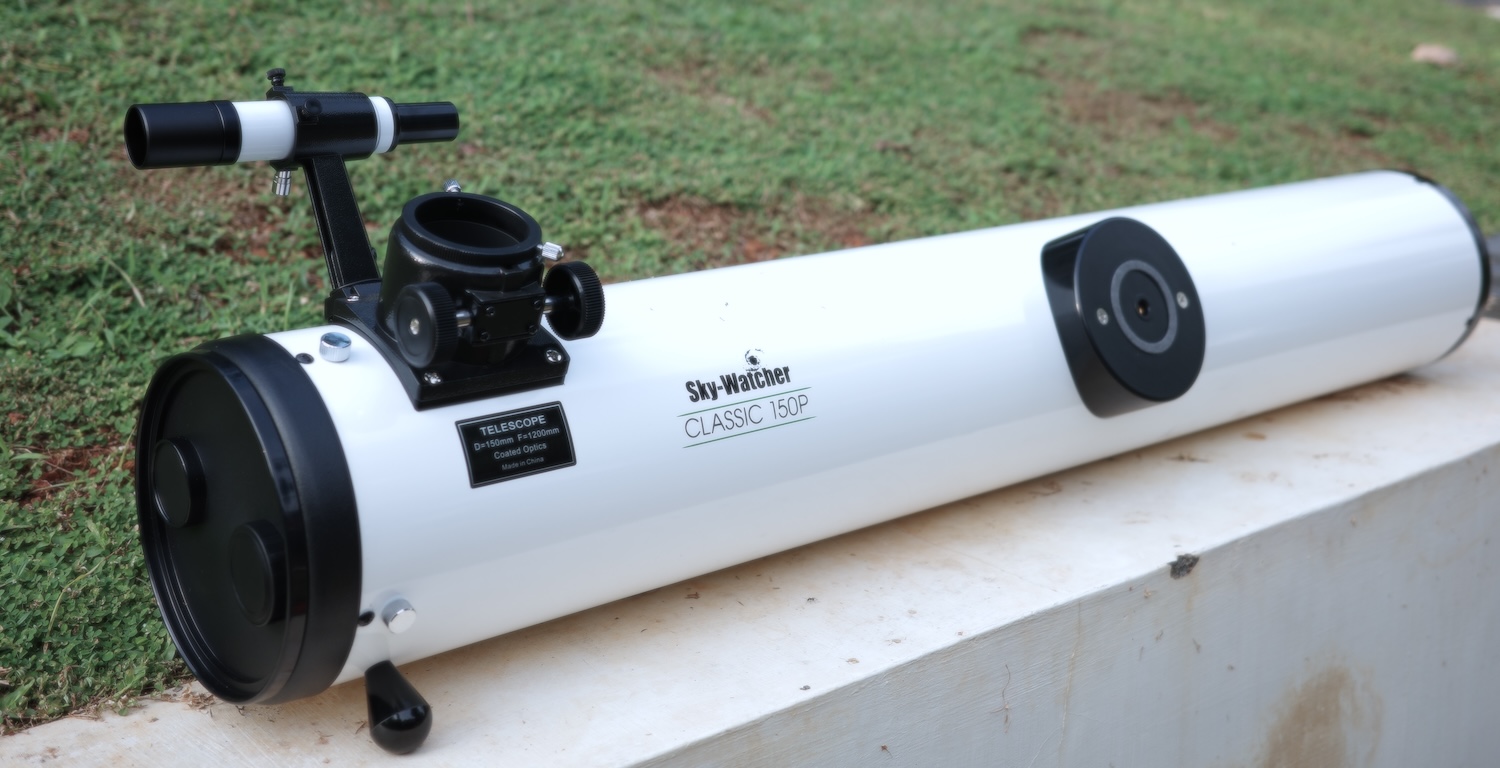The Optical Tube Performance Of Skywatcher 6″ Dob
The Skywatcher Classic 150 Dobsonian uses a 6” Newtonian optical tube with a focal ratio of f/8—a design that is fairly easy to manufacture to tight tolerances.
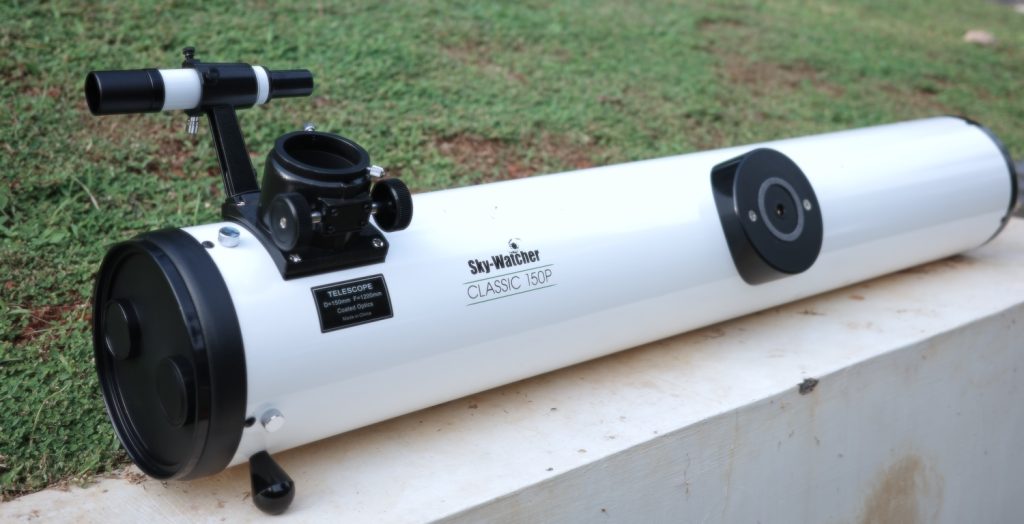
The slow f/8 focal ratio also means that the scope works well when I use it with cheap eyepieces like the “Supers” that come with it (these eyepieces exhibit astigmatism and other problems when used in faster focal ratio scopes). And the 1200mm focal length puts the eyepiece at a good height for children or adults who are sitting down. The tube fit across the back seat of most vehicles, though probably not in the trunk or boot of a smaller car.

The focuser on the 6″ Traditional is a single-speed, 2″ rack-and-pinion that is mostly made of metal. This is different from the 1.25″ plastic rack-and-pinions that I found on almost all cheaper scopes. I find the focuser working quite well for visual use, but the adaptor system Sky-Watcher includes is a bit confusing.
It requires me to swap out 2” and 1.25” extension tube adaptors depending on which size eyepiece/accessory I’m using. However, to solve this, you can get a 2” to 1.25” compression ring adaptor and leave the 2” extension tube in all the time.
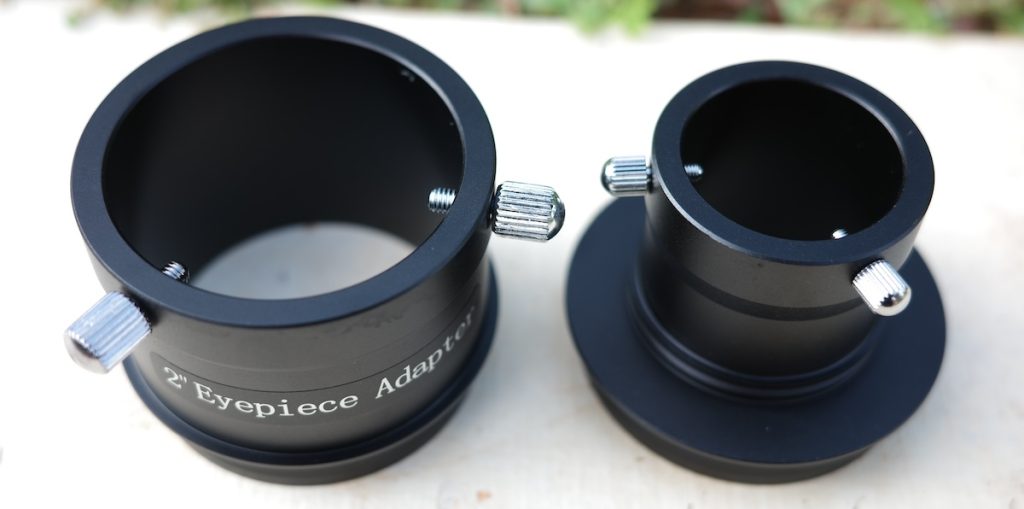
The 2” eyepiece format allows me to get a wider field of view than possible with 1.25” eyepieces at low magnifications, making it easier to find targets and fit larger ones in my field of view. But if I use a 2″ eyepiece that has the widest field of view, there is some vignetting because the scope’s secondary mirror isn’t big enough to fully light the field of view of all 2″ eyepieces.
Included Eyepieces and Finderscope
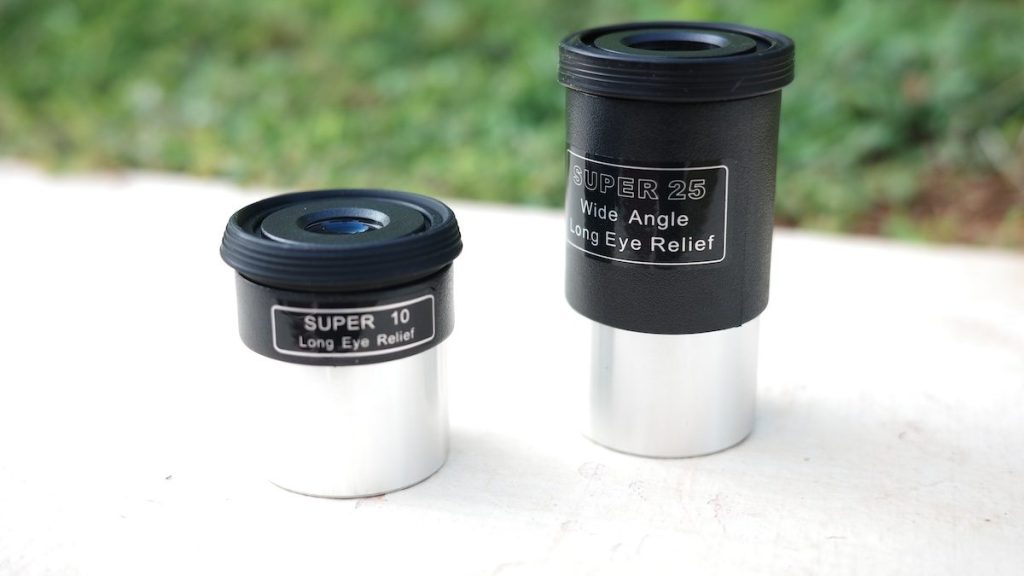
In addition to its ubiquitous 1.25” and 2” extension adaptors, the 6” Traditional includes two 1.25” “Super” eyepieces, which seem similar to Plossls—a 25mm (48x) and a 10mm (120x). These eyepieces will serve you well to start, but I’d recommend picking up additional eyepieces down the road if your budget suits them to get the most out of the scope.
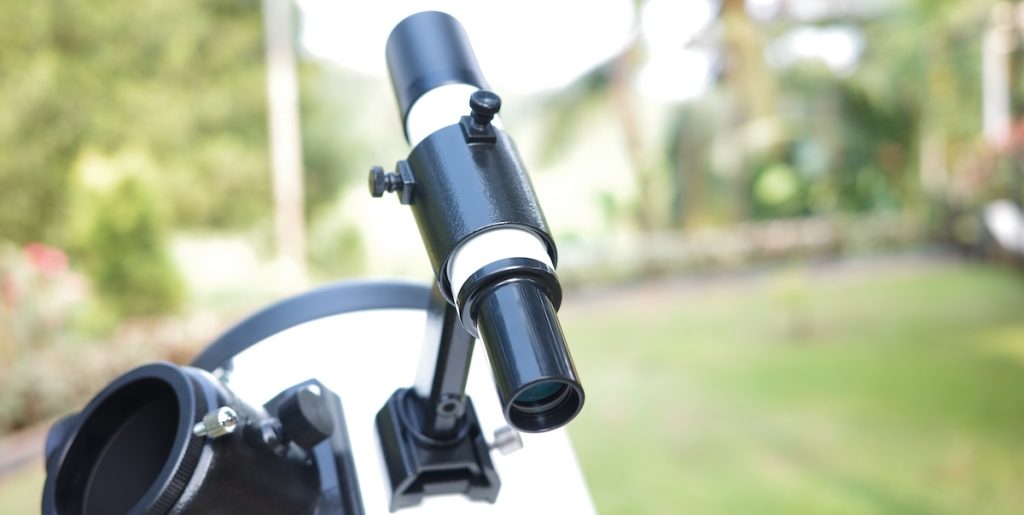
The included finderscope is a rather basic 6×30 unit, which works just fine for me. But I find its aperture a little small and the images dim as a result, with ergonomics that are less than ideal.
The Traditional Dobsonian Mount of Classic 150P
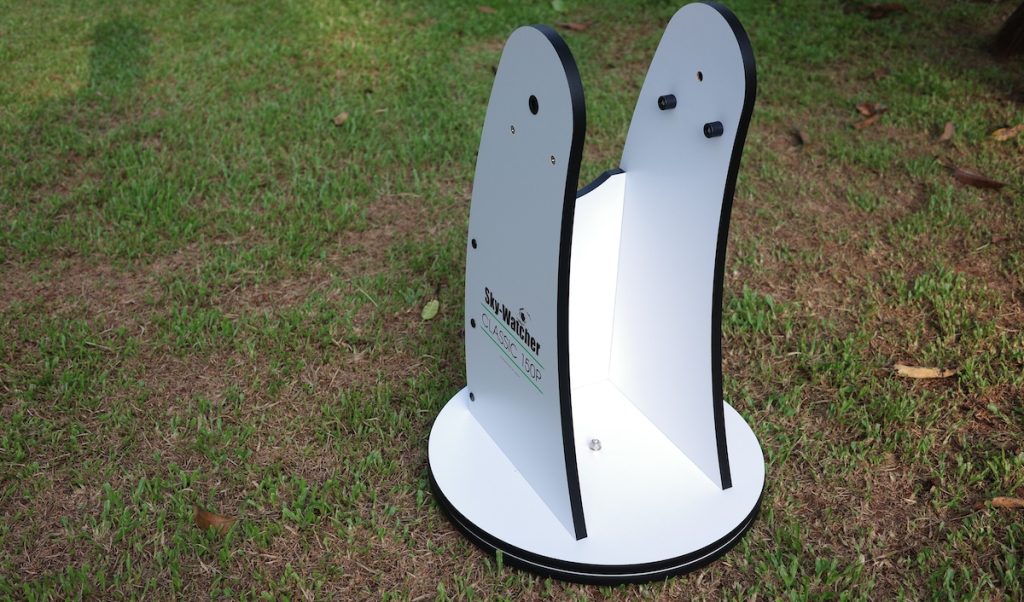
The altitude motion is provided by two round plastic bearings riding on Teflon cylinders attached to the interior of the mount. Tensioning is provided by a spring-loaded knob (basically just a bicycle handle and a hardware store spring) on one side.
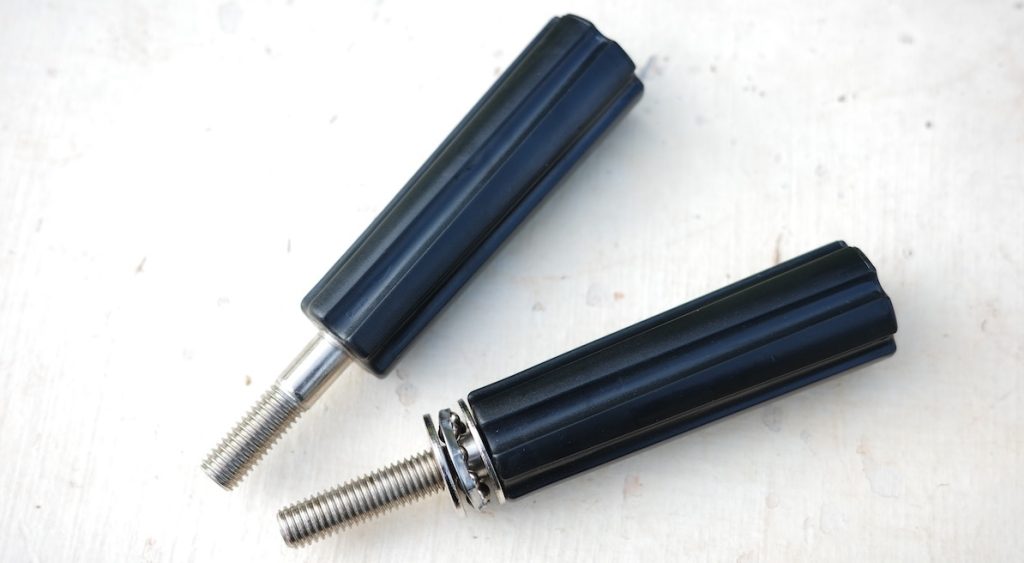
The other knob serves no purpose besides aesthetics/symmetry. Overall, the altitude-bearing system works well. It may be better than the spring system on the now-distinct Orion Dobsonians, but it isn’t as good as the GSO/Apertura bearing style.
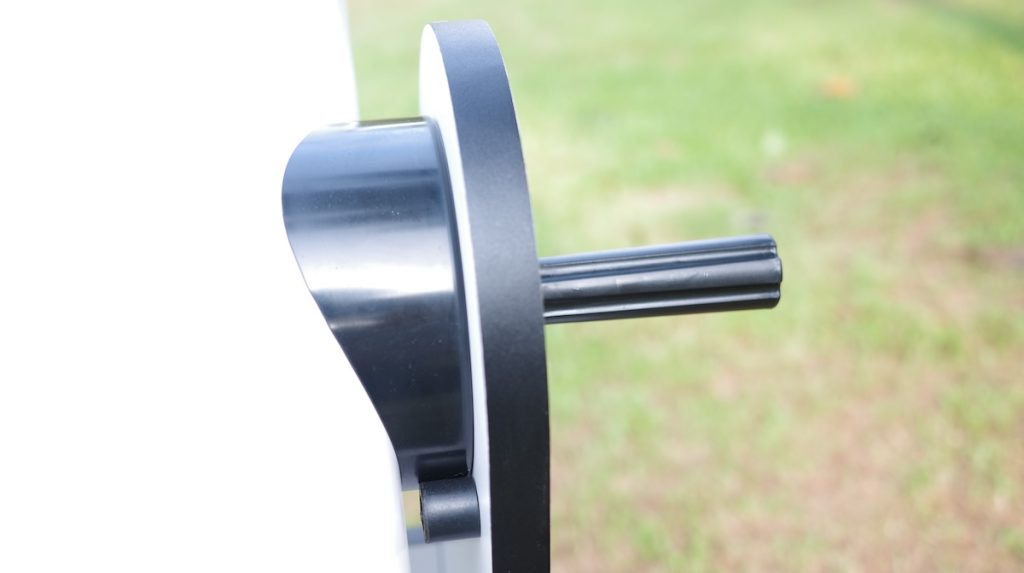
The azimuth movement of the telescope is made possible by small nylon pads that run directly against the melamine coating that covers the whole base. This coating is not perfect, but it is smooth and stable for the most part.
Like all commercial Dobsonians I’ve seen lately, the entire base of the telescope is made out of particleboard and was easily assembled just like IKEA furniture with the included Allen wrench and screwdriver.
What can you see with the SkyWatcher Classic 150P?
I agree with most people that a 6-inch aperture is the smallest size that is good for serious viewing of deep-sky objects like the Messiers and many of the NGC objects, like the Herschel 400, while still being cheap and portable.
You’ll be able to resolve the brighter globular clusters, such as M13, M15, and M3, into individual stars with no problems. The 6” Traditional also makes an ideal lunar, planetary, and double star instrument.
You won’t have any trouble seeing the ice caps and dark areas of Mars around opposition, the phases of Venus and Mercury, or the thousands of craters on the Moon that are anywhere from a mile to hundreds of miles across. Jupiter’s moons, cloud belts, polar zones, festoons, and its (slowly-shrinking) Great Red Spot are visible. You can see Saturn’s rings, the Cassini division inside them, some faint cloud banding, and about half a dozen moons. Uranus and Neptune are teal and azure dots, and you may just be able to spot Neptune’s moon Triton with dark and steady skies. The 6” traditional can also split double stars as close together as 0.75 arc seconds apart and will reveal thousands of asteroids to the keen-eyed observer (though keep in mind that none will look like anything more than slow-moving, stellar dots).
Alternative Recommendations
The Skywatcher Skyliner 150P Classic is one of our top picks in its price range, though there are a few other 6” telescopes you might want to consider instead – or even better, upgrading to an 8” reflector.
Under £500
- The Sky-Watcher Virtuoso GTi 150P – or its manual sibling, the Heritage 150P, are a lot more compact than the 6” Classic and the f/5 focal ratio offers a much wider possible field of view – though it’s more demanding on eyepieces. The GTi mount provides full motorised tracking and GoTo capabilities, while the tabletop design and collapsable tube of the 150P make transport and storage a lot easier.
- The Bresser Messier 6” f/8 Planetary Dobsonian has spring-tensioned altitude bearings which are an improvement on the bicycle brake handles of the 6” Classic, a superior 2” Crayford focuser with a brass compression ring and no silly adaptors, and an easier to use red dot finder for aiming.
£500-£700
- The StellaLyra 8”/Zhumell Z8/Orion SkyLine 8 (all of which are identical) offers nearly double the light gathering ability and 30% more resolving power of a 6” Dobsonian like the 6” Classic. You also get a dual-speed 2” Crayford focuser, a superior mount design, a 9×50 right-angle finder, and a high-quality 30mm SuperView 2” wide-angle eyepiece with this excellent telescope package.
- The Ursa Major 8 has a similar performance boost over the 6” Classic but only comes with a single speed (though still very nice) 2” Crayford focuser, red dot finder, and a single low-power 25mm Plossl eyepiece.
Aftermarket Accessory Recommendations
To truly unleash the potential of the Sky-Watcher Skyliner 150P Classic, a few additional eyepieces are necessary. The provided pair are good to get you started; however, a wide range of magnifications is essential for observing various types of celestial objects. A Celestron 40mm E-Lux 2” eyepiece (30x magnification) yields the lowest magnification and almost the widest possible true field of view that the Skyliner 150P can achieve. Alternatively, a 38mm OVL PanaView (32x magnification) or similar Super Wide Angle (SWA) eyepiece affords a slightly sharper, wider, and more immersive field. Both options are excellent for low-power viewing of deep-sky objects with the Skyliner 150P.
For a medium magnification between those of the provided 25mm and 10mm eyepieces, I recommend a 17mm Plossl (71x magnification), 16mm UWA (75x magnification), or 15mm redline/goldline ocular (80x magnification) for the Skyliner 150P Classic. A UWA or SWA eyepiece provides a wider and more immersive field of view compared to a Plossl and will be more useful if you decide to purchase a faster f/ratio instrument in the future.
For even higher magnifications, I suggest a 9mm goldline/redline (133x magnification) to replace the stock 10mm ocular, as it has significantly longer eye relief, a wider and more immersive apparent field, and better interior blackening for better contrast and less scatter on bright targets too. A 2x Barlow lens coupled with a 9/10mm eyepiece, or a dedicated 4mm or 5mm planetary eyepiece (300x or a more modest 240x, respectively), will provide the highest useful magnification with the Skyliner 150P Classic provided your atmospheric conditions permit it.
You’ll almost certainly want to replace the Skyliner 150P’s stock 1.25” extension tube/adaptor system and 2” extension tubes with adaptors that are a bit higher quality. A compression ring 1.25” adaptor with filter threads will enable the use of 2” filters with your 1.25” eyepieces and provide a secure, non-marring grip; the same goes for a 35mm threaded extension tube with a 2” compression ring adaptor. These will also permit more accurate collimation by properly squaring up a collimation tool. At this scope’s long focal ratio of f/8, collimation tolerances aren’t critical, but an inexpensive Cheshire collimation tool is a good investment and will make collimating the Skyliner 150P Classic much easier.
Additionally, you may want to replace the stock 6×30 finder provided with the Skyliner 150P Classic with a zero-power reflex sight finder, like the Telrad or Explore Scientific ReflexSight. Either option is much more user-friendly than the 6×30 finderscope and provides a simple illuminated reticle against a window aimed at the sky, making it extremely intuitive to align and use.
Lastly, a narrowband Ultra High Contrast (UHC)/OIII nebula filter can considerably enhance your views of nebulae, such as the Orion Nebula, when using almost any telescope, including the Skyliner 150P Classic. This filter also improves the visibility of planetary nebulae by reducing the brightness of surrounding stars, making it easier for you to locate them at low power. Moreover, it provides sufficient contrast improvement to reveal previously invisible nebulae throughout the night sky, such as the Crab Nebula and Veil Nebula supernova remnants, when using the Skyliner 150P Classic under dark skies. A 2″ filter will screw onto an aftermarket threaded 1.25″ adaptor such as the one linked above and consequently be compatible with either size eyepiece.

